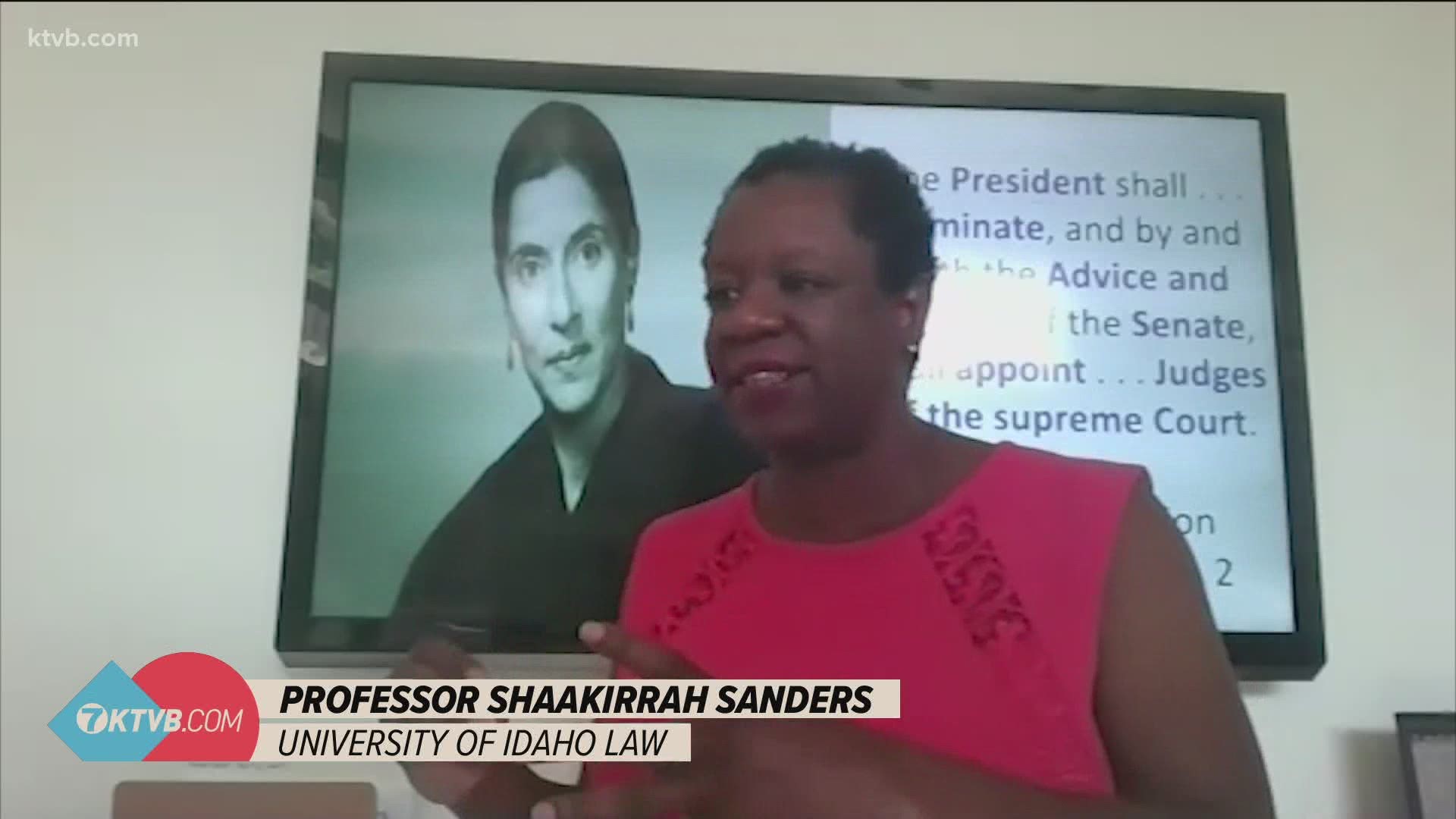BOISE, Idaho — The passing of Supreme Court Justice Ruth Bader Ginsburg leaves an open seat on the court during an election season with a heightened political climate.
Ginsburg's passing has also prompted discussion surrounding the process of appointing a Supreme Court justice.
Some lawmakers argue there is not enough time to go through the appointment process correctly. Others feel the American people should get to weigh in with their vote in the upcoming presidential election.
Contrary to popular belief, the system of replacing a vacant seat on the Supreme Court is inherently political, according to University of Idaho professor of law and constitutional experts Shaakirrah Sanders.
“This system is designed to be political. So to the extent that people think there is a problem with politics coming into this process, if you look at the Constitution, Article II Section II is called the appointment clause," Sanders said. "Pretty much it says the president has the power to nominate an individual for the U.S. Supreme Court and then the senate gives their consent by the appointments process."
The U.S. Constitution keeps the appointment process very simple.
“There are no rules of procedure that dictate when the nomination happens or when the appointment happens," Sanders said.
After a candidate is selected, the president’s official involvement is over. From there, the United States Senate takes control of the process.
“The senate has the power to make their own rules," Sanders said. "The president can’t say to the Senate, 'You have to do it this way.' There is a lot of independence in the different branches on this."
Traditionally, members of the Senate Judiciary Committee will investigate the candidate and hold hearings to essentially interview the president’s nominee. That leads to a recommendation to the full senate which usually then leads to a vote.
The rules around a majority vote have changed in recent years, but a successful vote now is 51 of the 100 senators voting yes.
“A simple majority, which is a new rule from back when Obama was president and the Democrats had control of the Senate," Sanders said. "The rules before required a super-majority but now it’s just a simple majority."
Throughout the past few days, debates have been had about filling the Supreme Court vacancy prior to the election. Some argue the process should wait until after the election, while some feel President Trump should be able to fill the seat now.
There are no laws or rules to enforce any time constraints, according to Sanders. It can simply happen at the will of the president and senate.
“If President Trump wanted to nominate someone tomorrow, so be it. If the Senate wanted to sit and hear that nomination the next day, so be it," she said. "It really is up to those separate branches of government about what the process is."
Since 1975, the average number of days from a nomination of a Supreme Court Justice to a confirmation vote is 67 days. Election Day is in 43 days and President Trump has not yet nominated someone.
Over the last 30 years, the fastest Supreme Court confirmation took 42 days. The Justice confirmed to the court? Ruth Bader Ginsburg in 1993.
“If this goes through before the election, that will be historic that we would get a vote in that quickly,” Sanders said.
Join 'The 208' conversation:
- Text us at (208) 321-5614
- E-mail us at the208@ktvb.com
- Join our The 208 Facebook group: https://www.facebook.com/groups/the208KTVB/
- Follow us on Twitter: @the208KTVB or tweet #the208 and #SoIdaho
- Follow us on Instagram: @the208KTVB
- Bookmark our landing page: /the-208
- And we also turn each episode into a podcast on Spotify or Podbeam
- Still reading this list? We're on YouTube, too:

